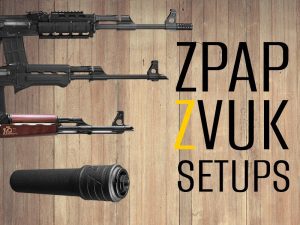You want a quiet rifle, a happy range officer, and a grin that says “this Zastava setup slaps.” Good news: most of America now agrees.
In 2025, 42 states allow private ownership of suppressors; eight states and D.C. still say no. That count matters when you plan a cross-country road trip with your ZPAP and a can.
Before we hit the roll call, let’s set the federal ground rules for 2025.
The 2025 federal snapshot (what you do right now)
Suppressors still sit under the National Firearms Act (NFA) in 2025.
You file an ATF eForm 4, attach fingerprints and a 2×2 photo, notify your Chief Law Enforcement Officer, pay the transfer tax, wait for approval, then pick up the can. The approval curve looks great this year: the ATF lists a 4-day median eForm 4 during the latest reporting period. Yes, days. Not months.
A big change looms: Congress passed the One Big Beautiful Bill this summer. The law drops the NFA tax on suppressors to $0, but the $0 rate starts on January 1, 2026. Through December 31, 2025, you still pay the $200 tax and follow the same steps. The registry and approvals continue after 1/1/2026; only the tax goes away.
The short version of the process
- Choose your suppressor path (individual or trust), then confirm your state allows ownership (see the list below).
- Visit your dealer, complete ATF eForm 4, add fingerprints and a 2×2 photo, pay the tax (still $200 in 2025), and submit.
- Wait for approval (recent median: about four days), then take the can home.
- Match your host rifle and muzzle threads (Zastava ZPAP models ship with common AK thread patterns), use good alignment habits, and enjoy a smoother impulse.
ATF posts live processing dashboards, so you can sanity-check those timelines anytime.
Suppressor legal states in 2025

Banned states + D.C. (no civilian possession):
- California
- Delaware
- Hawaii
- Illinois
- Massachusetts
- New Jersey
- New York
- Rhode Island
- District of Columbia.
If you live in or travel through those jurisdictions, possession can trigger state law issues. Plan routes around them.
All other states (42 total) allow ownership if you comply with federal law. Here’s the state-by-state roll so you can check your home base and your favorite range road trips:
- Alabama
- Alaska
- Arizona
- Arkansas
- Colorado
- Connecticut
- Florida
- Georgia
- Idaho
- Indiana
- Iowa
- Kansas
- Kentucky
- Louisiana
- Maine
- Maryland
- Michigan
- Minnesota
- Mississippi
- Missouri
- Montana
- Nebraska
- Nevada
- New Hampshire
- New Mexico
- North Carolina
- North Dakota
- Ohio
- Oklahoma
- Oregon
- Pennsylvania
- South Carolina
- South Dakota
- Tennessee
- Texas
- Utah
- Vermont
- Virginia
- Washington,
- West Virginia
- Wisconsin
- Wyoming
Special hunting notes (2025)
- Hunting with suppressors: 41 states say yes. One exception remains: Connecticut bans suppressors for hunting, even though the state allows ownership. The statute says, “No person shall use any silencer on any firearm when hunting.” Several 2025 bills aimed to change that, but the ban still stands as of this writing.
- Vermont: green light for hunting with suppressors; the state made it permanent in 2024 and the 2025 regulations reflect it.
FAQs, 2025 edition
- Do I still need the old paper fingerprint cards? You need fingerprints and a 2×2 photo; your dealer or kiosk can capture them. You still submit those with eForm 4 in 2025. Approval arrives after ATF clears your background check; recent medians look very fast.
- Will the $0 tax change remove the NFA process? No. The law zeroes the tax but keeps forms, background checks, and approvals. That $0 rate starts January 1, 2026.
- Can I hunt with a suppressor in my state? If your state allows ownership, the answer is almost always yes—except Connecticut, which bars hunting use. Vermont sits in the “yes” column. Check your state regs before you plan a season.
Bottom line
Most of the map sits on your side in 2025. Forty-two states welcome suppressor owners who follow the NFA steps. Eight states and D.C. still prohibit possession. You still file the eForm 4 and pay the tax this year, but a $0 tax kicks in on January 1, 2026 while the approval process remains in place.
If you shoot a Zastava rifle, you already value rugged parts and smart engineering; a well-matched suppressor simply rounds out the setup and treats your ears right. Keep it legal, keep it aligned, and enjoy that softer pulse.



